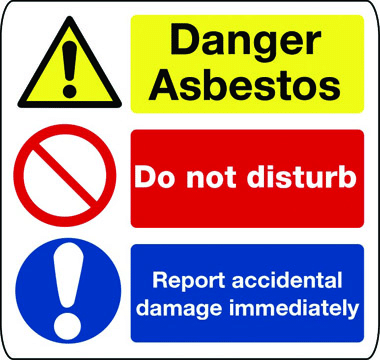What To Do If You Disturb Asbestos
Don’t Panic – Follow These Steps If You Disturb Asbestos If you accidentally break or disturb material that you suspect …

Introduction
Asbestos, a term that evokes concerns of health risks and structural hazards, was once a celebrated building material due to its remarkable properties. However, as understanding of its health implications grew, legislation in countries like the UK took steps to manage and eliminate the risk. Here, we’ll delve deep into what asbestos is, its origins, UK legislation related to it, and the steps to safely remove it.
Asbestos is a collective name for a group of silicate minerals composed of fibrous structures. These minerals are naturally occurring and can be separated into thin, durable threads, resistant to heat, electricity, and chemical corrosion. These properties made asbestos an ideal material for various applications, especially in construction, insulation, and fireproofing.
The six types of asbestos minerals are:
Of these, chrysotile, crocidolite, and amosite were the most commercially utilized.
The use of asbestos dates back thousands of years. Ancient Egyptians, for example, used asbestos cloths for burial rites. The Greeks used it to make lamp wicks, and the Romans used asbestos fabrics to wrap the dead before cremation to prevent ash contamination. Its name itself is derived from the ancient Greek word meaning “inextinguishable” or “indestructible”.
The large-scale industrial use of asbestos began in the late 19th century when its properties became essential for the booming manufacturing and construction sectors. It was used in items such as fire-resistant roofing, flooring, electrical insulation, and even in shipbuilding for its insulation properties. By the mid-20th century, asbestos was hailed as a “miracle mineral” due to its widespread use.
However, by the late 20th century, it became evident that inhalation of asbestos fibres could lead to serious health issues. Microscopic asbestos fibers, when released into the air and inhaled, can get trapped in the lungs and remain there for prolonged periods. Over time, these fibres can accumulate and cause inflammation, leading to several health issues, including:
With mounting evidence of these health risks, many countries, including the UK, began re-evaluating the use of asbestos.
The history of asbestos regulation in the UK is long and evolved as understanding of its dangers grew:
As a result of the known dangers, the removal of asbestos should always be conducted with utmost caution. Here’s a basic guide:
Conclusion
Asbestos, once revered for its unique properties, became a significant health concern by the late 20th century. Understanding its history and the evolution of regulations, especially in countries like the UK, highlights the importance of adapting to new scientific findings for public health. If one ever encounters this mineral in older buildings or structures, it’s crucial to approach the situation with caution, always prioritising safety and adherence to the appropriate guidelines.
Don’t Panic – Follow These Steps If You Disturb Asbestos If you accidentally break or disturb material that you suspect …
Asbestos is a naturally occurring mineral that has been extensively used throughout history due to its durable and heat-resistant properties. …
Moving between homes is right at the top of the list when it comes to stressful situations, and it is …